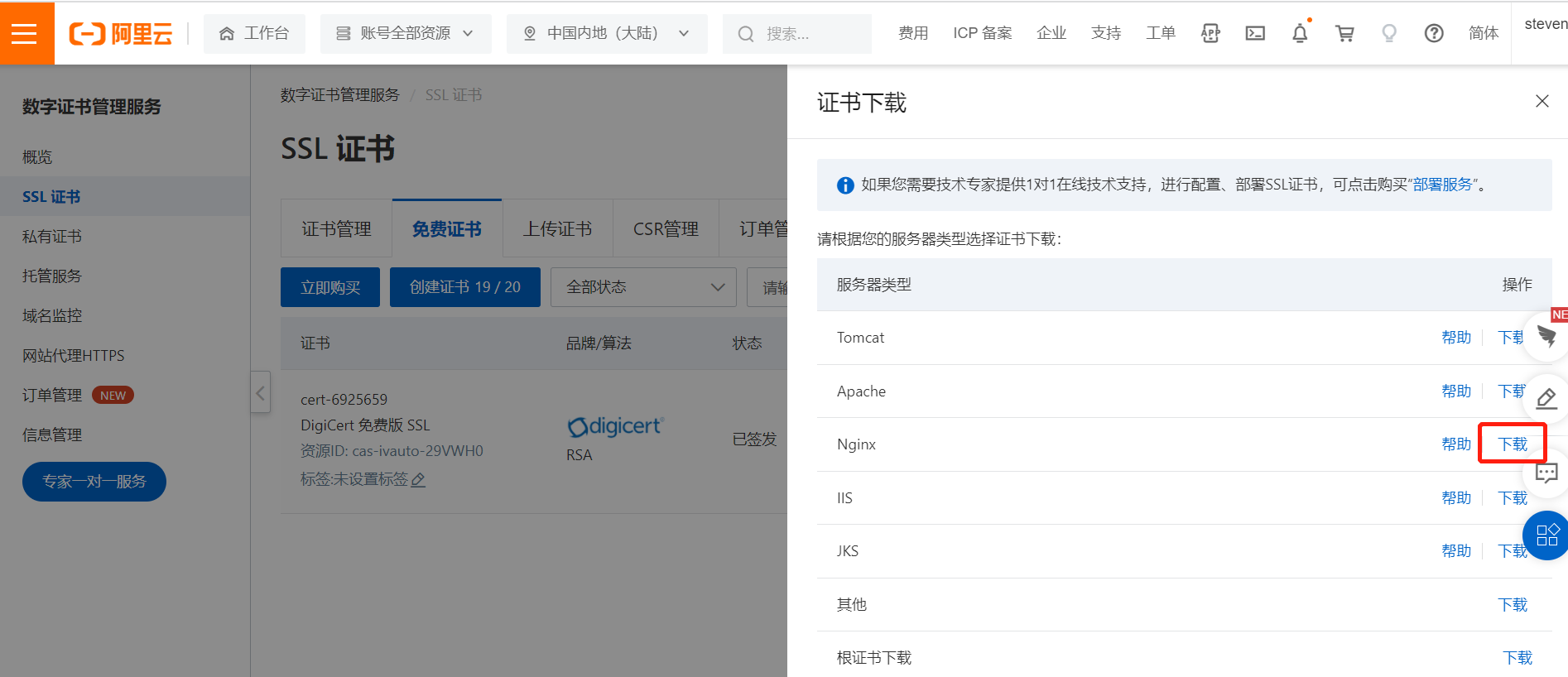DataKit Configuration for HTTPS¶
Introduction¶
HTTPS is an HTTP channel that aims for security, ensuring the safety of data transmission through transport encryption and identity authentication on top of HTTP. For security reasons, HTTPS protocol is often used when deploying front-end applications. When configuring RUM for front-end applications using HTTPS, if the deployed DataKit still uses IP + port with HTTP protocol, browsers will consider it insecure, preventing the application's RUM data from being reported to Guance.
This article will use Nginx's SSL to enable HTTPS on the server.
Prerequisites¶
- A cloud host running CentOS 7.9
- An Alibaba Cloud domain name that has been resolved to the cloud host's port 80
- The cloud host has <DataKit installed>
Procedure¶
Warning
The current example uses DataKit version 1.4.20 (latest version) and Nginx version 1.22.1 for testing
1 Install Nginx¶
1.1 Install the yum-utils Package¶
Log in to the cloud host and execute the following command.
1.2 Create nginx.repo¶
Create a /etc/yum.repos.d/nginx.repo file with the following content.
[nginx-stable]
name=nginx stable repo
baseurl=http://nginx.org/packages/centos/\$releasever/\$basearch/
gpgcheck=1
enabled=1
gpgkey=https://nginx.org/keys/nginx_signing.key
[nginx-mainline]
name=nginx mainline repo
baseurl=http://nginx.org/packages/mainline/centos/\$releasever/\$basearch/
gpgcheck=1
enabled=0
gpgkey=https://nginx.org/keys/nginx_signing.key
1.3 Execute the Installation Command¶
When you see "running," it indicates that Nginx has been successfully installed.
1.4 Check the SSL Module¶
Enter nginx -V. If the output includes --with-http_ssl_module, the SSL module is installed.
2 Download the Certificate¶
2.1 Download the SSL Certificate¶
Log in to Alibaba Cloud - Digital Certificate Management Service - SSL Certificates and create a free certificate.
After successfully creating the certificate, find Nginx and click "Download."
2.2 Upload the Certificate¶
Unzip the SSL certificate and upload 7279093_www.zzdskj.cn.key and 7279093_www.zzdskj.cn.pem to the /opt/key directory on the cloud host.
2.3 Modify the Nginx Configuration File¶
Edit the /etc/nginx/conf.d/default.conf file and input the following content.
Port 443 will be redirected to DataKit's port 9529.
server {
listen 80;
server_name localhost;
#access_log /var/log/nginx/host.access.log main;
rewrite ^(.*)$ https://$host$1 permanent;
}
server {
listen 443 ssl http2;
server_name zzdskj.cn;
ssl_certificate /opt/key/7279093_www.zzdskj.cn.pem;
ssl_certificate_key /opt/key/7279093_www.zzdskj.cn.key;
location / {
proxy_set_header Host $http_host;
proxy_set_header X-Real-IP $remote_addr;
proxy_set_header REMOTE-HOST $remote_addr;
proxy_set_header X-Forwarded-For $proxy_add_x_forwarded_for;
proxy_pass http://localhost:9529/;
}
error_page 404 /404.html;
location = /40x.html {
}
error_page 500 502 503 504 /50x.html;
location = /50x.html {
}
}
2.4 Reload the Configuration¶
Execute the following command.
3 Verification¶
Enter the domain name with HTTPS in the browser. If you see the following interface, the configuration is successful.




